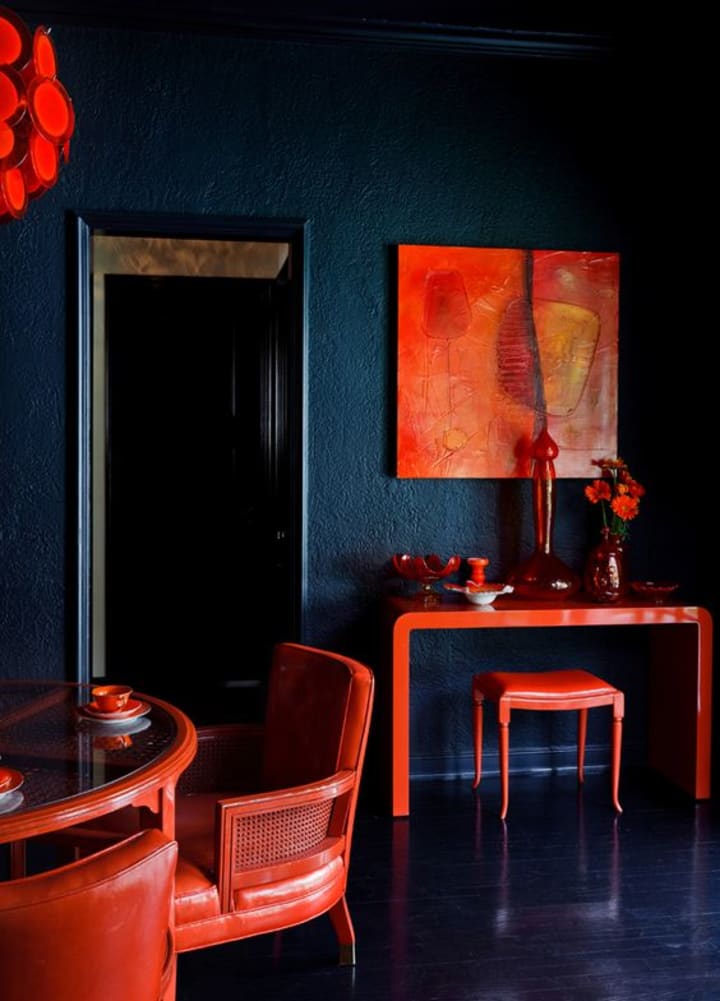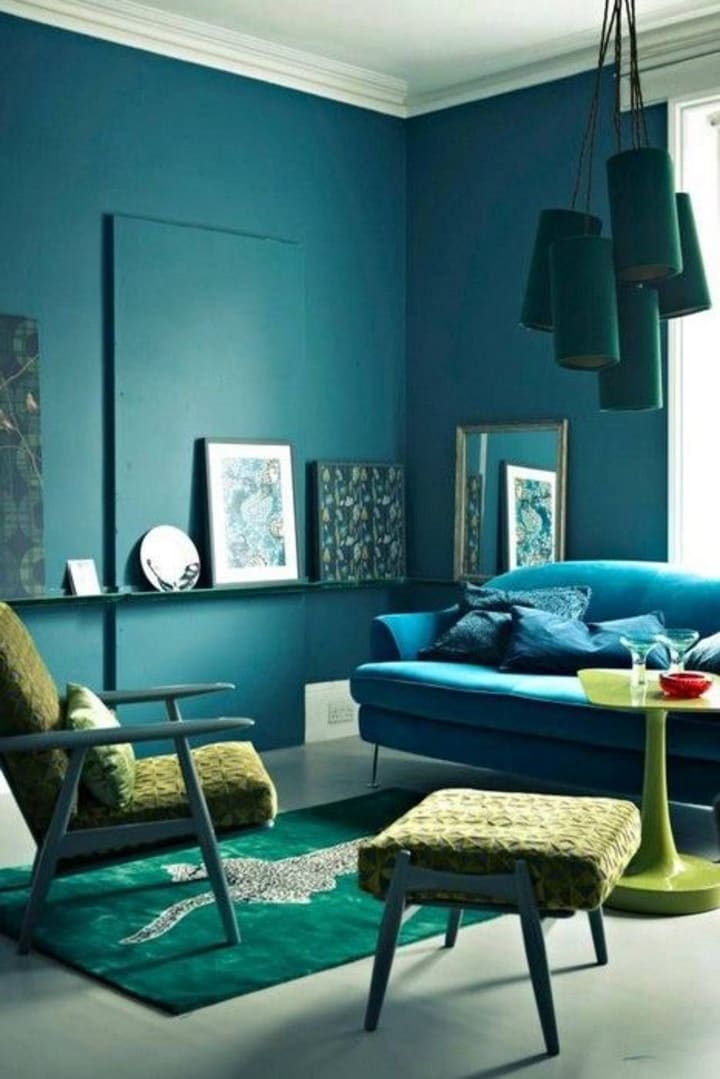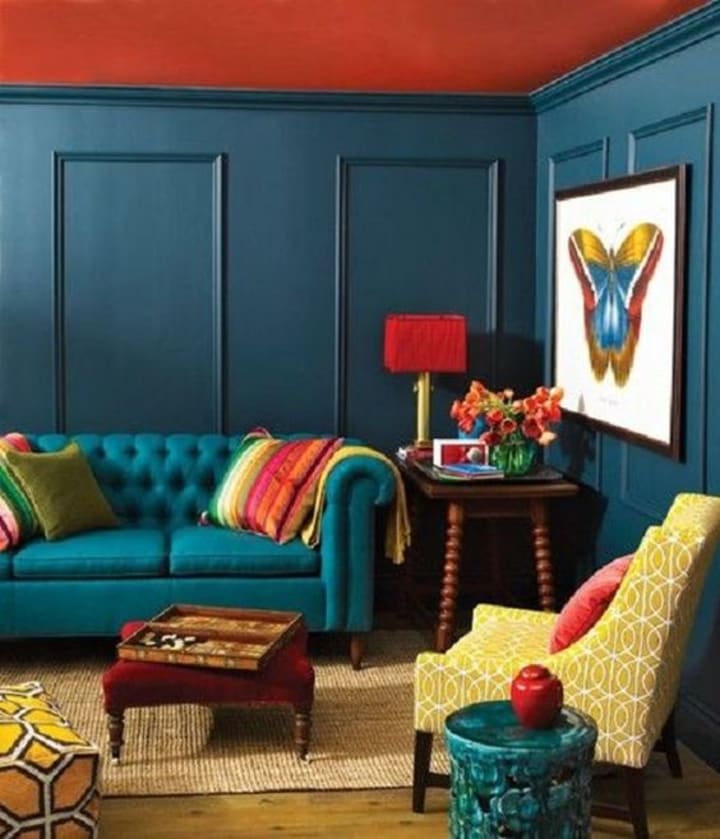Colours and Interiors
A Guide to Choose the Right Colour Combination

Colour is such a strong component in a design scheme, a newly painted wall can forcefully mutate the overall mood of a room. There are gazillions of options when it comes to deciding which colour we will use, and how to make different colours work together.
Colour theory is a great instrument which helps us to understand colour scheme and the appeals they create. Modern Colour Theory refer to Isaac Newton's Colour wheel which displays three primary colours: yellow, red and blue.
Secondary colours: purple, green, orange.
Tertiary colours: six colours, created by mixing a primary colour and a secondary colour with a 2:1 ratio. The colour Wheel is used to develop colour schemes, used to create style and appeal.
1: Complementary Scheme:
Complementary colours are opposite to one another on the colour wheel (es. Yellow and Violet).
This scheme combines cool and warm together, therefore it brings emotional balance.
TIPS: Choose your first colour and check which one is opposite, this is your second hue.
Use one colour as dominant and the other in a smaller portion, used in equal parts they will fight.
2: Split Complementary:
One hue and Two adjacents hues of its complementary (Es. Violet vs Yellow, Yellow-orange).
The dominance of one colour maintain the dramatic effect
TIPS: Use a single warm colour against cool colours to put emphasis on the warmth (es. Red VS Blue, Blue Green). Avoid the use of desaturated warm colours as brown or dull yellow, it could ruin the scheme.
3: Analogous Harmony:
Analogous are adjacents and similar hues on the colour wheel ( Orange, red-orange, red).
The scheme does not present a strong contrast that is why creates a tame and restful atmosphere. Like the other schemes, one colour should be dominant.
TIPS: Avoid the use of too many hues, it could ruin the harmony of the scheme, avoid mixing cool and warm colours.
4: Triadic Harmony:
Consists in three hues equidistant from one another in the colour wheel. Selecting pure strong colours as red, yellow, blue, will produce a very active and vigorous atmosphere.
TIPS: To use this scheme successfully let one colour dominate and use the other two for accent.
5: Monochromatic Harmony:
This scheme uses different tints, shades and tonal values of the same colour. This brings unity and a sense of visual cohesion to a space.
TIPS: Use texture and light to avoid monotony.
And remember it is always a good idea to plan the colour scheme of your house as a whole. While it is true that every room should not be decorated in the same way, a sort of continuum is preferable.
When you think of colours, do not think only in terms of walls. Floors occupy a large surface and they can be a great feature in your design.
These rules, they can be a great help, but at the very end what matters is your taste and what feels right for you. After all, you know what they say about rules...
Little vocabulary:
Hue: The attribute by which we recognise and describe a colour.
Value: The degree of lightness or darkness of a colour in relation to white and black.
Intensity: The degree of purity or saturation of a colour when compared to a grey of the same.

Complementary Scheme





About the Creator
Ilaria Galetta
I am an Interior designer passionate about sustainability






Comments
There are no comments for this story
Be the first to respond and start the conversation.